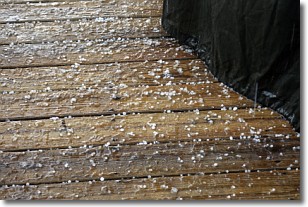Weather Alert in New Mexico
Fire Weather Watch issued May 6 at 2:23AM CDT until May 7 at 9:00PM CDT by NWS Midland/Odessa TX
AREAS AFFECTED: Sacramento Foothills and Guadalupe Mountains; Chaves County Plains; Eddy Plains; Lea; Loving; Guadalupe Mountains Above 7000 Feet; Guadalupe and Delaware Mountains; Van Horn and Highway 54 Corridor; Eastern Culberson County; Reeves County Plains; Davis Mountains; Davis Mountains Foothills
DESCRIPTION: ...RED FLAG WARNING IN EFFECT FROM THIS AFTERNOON THROUGH THIS EVENING FOR RELATIVE HUMIDITY OF 15% OR LESS, 20-FT WINDS OF 20 MPH OR MORE, AND VERY HIGH TO EXTREME FIRE DANGER FOR THE SACRAMENTO FOOTHILLS, SOUTHEAST NEW MEXICO PLAINS, GUADALUPE AND DAVIS MOUNTAINS, DAVIS MOUNTAINS FOOTHILLS, CULBERSON COUNTY, AND THE UPPER TRANS PECOS... ...FIRE WEATHER WATCH IN EFFECT FROM TUESDAY AFTERNOON THROUGH TUESDAY EVENING FOR RELATIVE HUMIDITY OF 15% OR LESS, 20-FT WINDS OF 20 MPH OR MORE, AND VERY HIGH TO EXTREME FIRE DANGER FOR THE SACRAMENTO FOOTHILLS, SOUTHEAST NEW MEXICO PLAINS, GUADALUPE AND DAVIS MOUNTAINS, DAVIS MOUNTAINS FOOTHILLS, CULBERSON COUNTY, AND THE UPPER TRANS PECOS... ...FIRE WEATHER WATCH IN EFFECT FROM TUESDAY AFTERNOON THROUGH TUESDAY EVENING FOR RELATIVE HUMIDITY OF 15% OR LESS, 20-FT WINDS OF 20 MPH OR MORE, AND VERY HIGH TO EXTREME FIRE DANGER FOR THE SACRAMENTO FOOTHILLS, SOUTHEAST NEW MEXICO PLAINS, GUADALUPE AND DAVIS MOUNTAINS, DAVIS MOUNTAINS FOOTHILLS, CULBERSON COUNTY, AND THE UPPER TRANS PECOS... * AFFECTED AREA...Loving, Sacramento Foothills and Guadalupe Mountains, Chaves Plains, Eddy Plains, Lea, Guadalupe Mountains Above 7000 Feet, Guadalupe and Delaware Mountains, Van Horn and Highway 54 Corridor, Eastern Culberson County, Reeves County Plains, Davis Mountains and Davis Mountains Foothills. * TIMING...For the Red Flag Warning, from noon CDT /11 AM MDT/ today to 9 PM CDT /8 PM MDT/ this evening. For the Fire Weather Watch, from Tuesday afternoon through Tuesday evening. * WINDS...West 20 to 30 mph with gusts up to 50 mph. * RELATIVE HUMIDITY...As low as 5 percent. * RFTI...5 to 7 or critical. * IMPACTS...Avoid the use of open flames or any activities that may generate sparks, such as outdoor burning or welding. Extinguish cigarettes in vehicles. Accidental ignitions will have the potential to grow into dangerous wind-driven wildfires.
INSTRUCTION: A Red Flag Warning means that critical fire weather conditions are either occurring now or will shortly. A combination of strong winds, low relative humidity and warm temperatures will increase potential for fire growth. A Fire Weather Watch means that critical fire weather conditions are forecast to occur. Listen for later forecasts and possible Red Flag Warnings.
Want more detail? Get the Complete 7 Day and Night Detailed Forecast!
Current U.S. National Radar--Current
The Current National Weather Radar is shown below with a UTC Time (subtract 5 hours from UTC to get Eastern Time).

National Weather Forecast--Current
The Current National Weather Forecast and National Weather Map are shown below.

National Weather Forecast for Tomorrow
Tomorrow National Weather Forecast and Tomorrow National Weather Map are show below.

North America Water Vapor (Moisture)
This map shows recent moisture content over North America. Bright and colored areas show high moisture (ie, clouds); brown indicates very little moisture present; black indicates no moisture.

Weather Topic: What is Rain?
Home - Education - Precipitation - Rain
 Next Topic: Shelf Clouds
Next Topic: Shelf Clouds
Precipitation in the form of water droplets is called rain.
Rain generally has a tendency to fall with less intensity over a greater period
of time, and when rainfall is more severe it is usually less sustained.
Rain is the most common form of precipitation and happens with greater frequency
depending on the season and regional influences. Cities have been shown to have
an observable effect on rainfall, due to an effect called the urban heat island.
Compared to upwind, monthly rainfall between twenty and forty miles downwind of
cities is 30% greater.
Next Topic: Shelf Clouds
Weather Topic: What is Sleet?
Home - Education - Precipitation - Sleet
 Next Topic: Snow
Next Topic: Snow
Sleet is a form of precipitation in which small ice pellets are the primary
components. These ice pellets are smaller and more translucent than hailstones,
and harder than graupel. Sleet is caused by specific atmospheric conditions and
therefore typically doesn't last for extended periods of time.
The condition which leads to sleet formation requires a warmer body of air to be
wedged in between two sub-freezing bodies of air. When snow falls through a warmer
layer of air it melts, and as it falls through the next sub-freezing body of air
it freezes again, forming ice pellets known as sleet. In some cases, water
droplets don't have time to freeze before reaching the surface and the result is
freezing rain.
Next Topic: Snow




